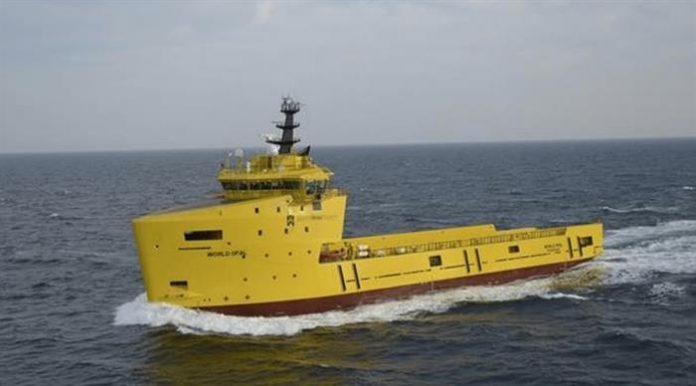“World Opal” to become “Eidsvaag Opal”.
One month ago, the shipping company Eidsvaag in Frøya, Central Norway, bought the offshore ship “World Opal” from Borealis Maritime.
The boat, which was built in 2013, will be converted into a feed boat to be used to transport feed for Cargill and Skretting.
In February, SalmonBusiness reported that the two companies selected shipping company Eidsvaag to be responsible for planning and handling of transport, including ships currently under contract. This was to limit shipping traffic and reduce greenhouse gas emissions by one fifth.
The collaboration was called Fjordfrende, which in English means fjord friend.

Eidsvaag Operating manager Vidar Eidsvaag confirmed the news to SalmonBusiness.
“There is a new boat, which has been inactive for four years. It, therefore, has almost no operating hours. It’s a good object when optimizing Fjordfrende and fits especially well into the development licenses that has come or will come,” he said.
Done in May 2020
“World Opal”, now called “Eidsvaag Opal”, was towed to Amsterdam on Monday. It arrived in the Dutch city on Saturday.
“Damen Shiprepair & Conversion will rebuild the boat. The Damen group know it well as they were the ones who built it initially. The boat will be finished in May next year,” Eidsvaag told SalmonBusiness.
After the rebuild, the boat will have a loading capacity of 2,800 tonnes. It was Vestlandsnytt that first reported the news.
Good teamwork
Eidsvaag told SalmonBusiness that the shipping company has 16 vessels in the Fjordfrende. The number of boats in operation depends on the season.
When asked how many boats the company will put on the route, Vidar Eidsvaag said: “It’s about adjusting capacity based on sales to Cargill and Skretting. There are six factories we pick from, and a certain number of vessels are needed for flexibility.”
The transport cooperation started on June 1 this year and will initially last for five years.
“It has worked well so far. We started in a high season, and it was limited how much we could optimise,” Eidsvaag concluded.











